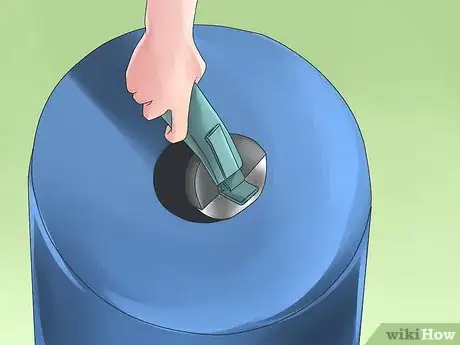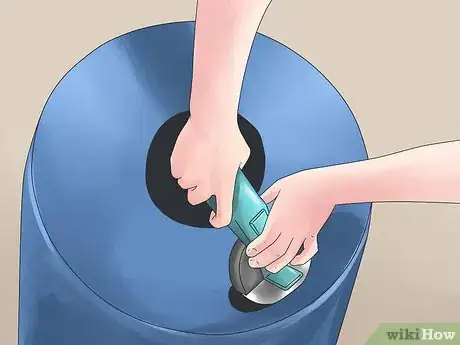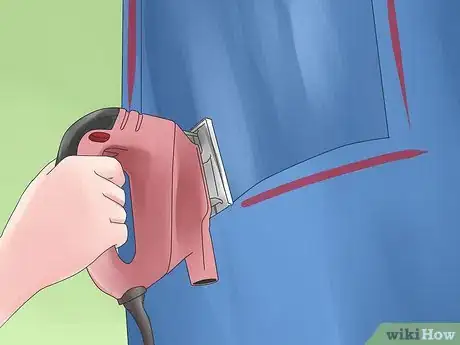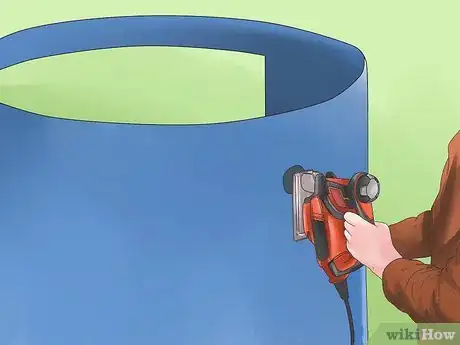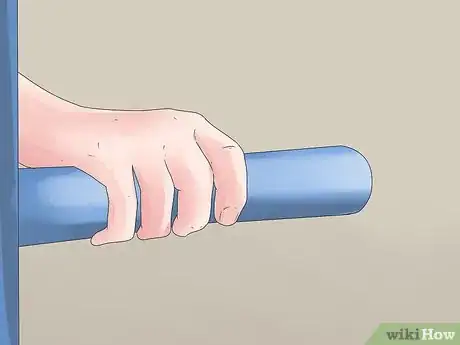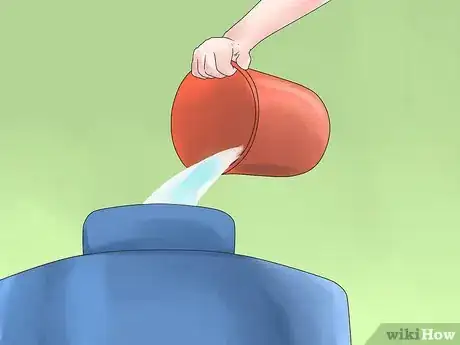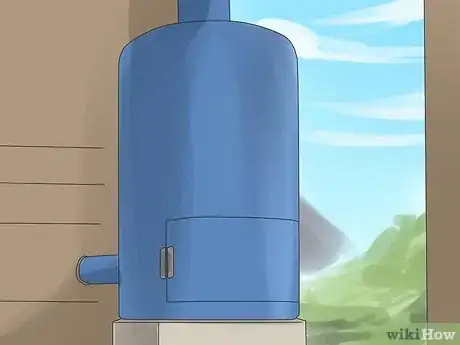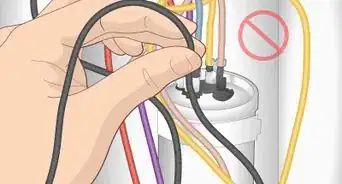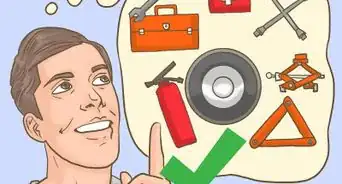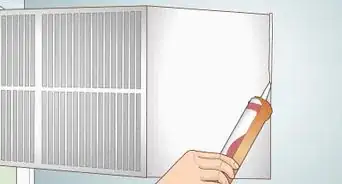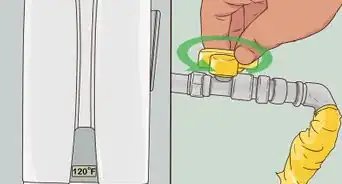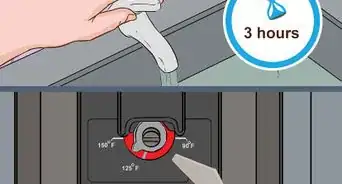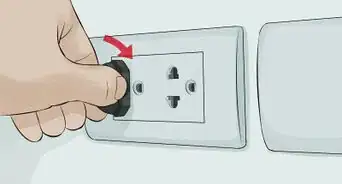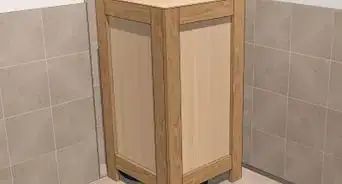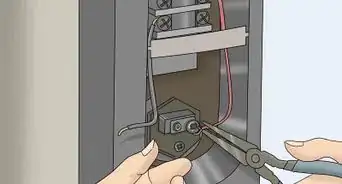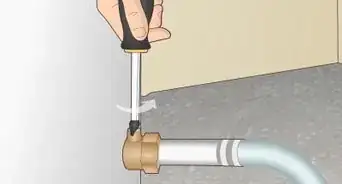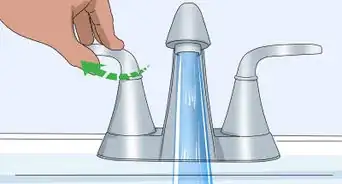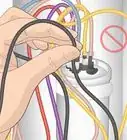X
wikiHow is a “wiki,” similar to Wikipedia, which means that many of our articles are co-written by multiple authors. To create this article, 17 people, some anonymous, worked to edit and improve it over time.
This article has been viewed 187,920 times.
Learn more...
In rural areas, this "volcano" style water heater does an amazing job of heating water for bathing. Unless you regulate the fire or can adjust the hot and cold water flows properly, it is not recommended for showering purposes, as the water can reach boiling temperature in a very short while.
Steps
-
1Measure and cut one hole centrally in each end of the tank or drum, so that the 150 mm pipe fits through snugly. Push the pipe right through the tank, and solder, weld or braise in place, ensuring that the joints are water-tight, so that it is flush with one end. This will be the bottom of the water heater. The pipe is the chimney.
-
2Measure and cut a hole in the top of the water heater, into which the J-shaped pipe fits snugly, and solder, braise or weld the longer leg into it. This is the overflow/expansion/pressure release pipe, without which the heater will either not function at all, as you will not be able to pipe water into it, or will turn your water heater into a bomb that will explode with devastating consequences.Advertisement
-
3Cut one or two holes into the bottom of the tank and insert, solder, weld or braze them into place to act as inlet and outlet, or use one pipe to perform both functions, or just cut a hole in the top and pour water into the tank. You will, nevertheless, require an outlet at the bottom, onto which you should fit a tap (faucet), if you do not want the water to run out as fast as you pour it in.[1]
-
4Cut a rectangular hole into the bottom of the topless 300 mm high cylinder, through which you will feed fuel for your fire and via which you will remove the ash.
-
5If you intend using this water heater indoors, cut a second, round hole in the back, opposite the rectangular hole. Affix a length of pipe of that same diameter as the chimney, to this hole.
-
6Push the pipe through a hole in the wall so that the other end of the pipe is outside the building so that, as long as the firebox door is closed, the fire draws air from outside and not from inside.
-
7To make a door for the firebox, use the rectangular piece of steel you cut from the front and apply two hinges and a latch and catch as illustrated:
-
8Position the tank on top of the topless cylinder and weld or braise in place.
-
9Fill the tank with water, make a fire in the bottom and let the water heat up.[2]
-
10Your water heater should resemble something like this when finished.
Advertisement
Community Q&A
-
QuestionWhat is the importance of this water heater?
 DvortygirlCommunity AnswerIt's a simple device that a reasonably skilled person can make at home and use in a rural environment where there might not be a supply of natural gas, electricity or propane.
DvortygirlCommunity AnswerIt's a simple device that a reasonably skilled person can make at home and use in a rural environment where there might not be a supply of natural gas, electricity or propane.
Advertisement
Warnings
- Unless you have made a hole in the top of the tank, into which you pour the water to be heated, and which remains open at all times, you must ensure that it is equipped with the overflow/expansion/pressure release pipe as indicated in step 2 above.⧼thumbs_response⧽
- Make sure that the water heater will comply with government safety standards. Your homeowners insurance might reject a claim if it doesn't comply with these standards.⧼thumbs_response⧽
- Be aware of the risk of carbon monoxide poisoning if you use this heater indoors. A fire that is not vented properly creates a risk of leaking poisonous gases into the living area. Carbon monoxide is odorless, colorless, and deadly![3] Make sure you use good workmanship and common sense to create a properly functioning chimney system that removes all the smoke and fumes.⧼thumbs_response⧽
Advertisement
Things You'll Need
- 1 metal tank or drum, size depending on your requirements.
- 1 length of metal piping, about 150 mm (6 inches) in diameter, at least twice as long as the tank, for the chimney.
- 1 shorter length of metal tubing, about 25mm (1 inch) inside diameter, bent into a “J" shape, if possible, if not, supply it with loosely-fitting cap, to keep livestock out.
- If used indoors, a second length of 150 mm (6 inches) diameter piping to be chased through an outside wall as an air supply to the firebox.
- The rectangular cutout to be used as the door to the firebox.
- Door treatments, i.e: hinges and latch and catch.
- Supports to lift firebox off the floor so that the floor is not damaged.
References
About This Article
Advertisement
